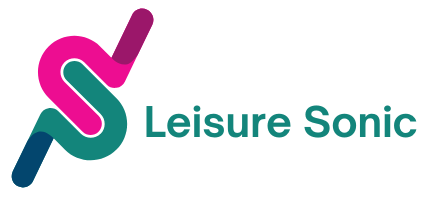Table of Contents
ToggleIn a world where software rules the roost, SaaS websites have become the superheroes of the digital age. They swoop in to save businesses from clunky installations and endless updates, offering seamless solutions with just a few clicks. Imagine having your favorite software ready to go without the hassle of a tech support hotline on speed dial. That’s the magic of Software as a Service.
Understanding SaaS Websites
SaaS websites serve as vital components in today’s digital economy. These platforms streamline software delivery, allowing users easy access without complex installations.
Definition of SaaS
SaaS, or Software as a Service, refers to software distribution where applications reside on a cloud infrastructure. Users connect via the internet, accessing software on-demand. This model contrasts traditional software installations, where physical media and significant setup often pose challenges. Businesses and individuals enjoy flexibility and scalability with SaaS. Popular examples include platforms like Salesforce, Google Workspace, and Dropbox. Each provides unique functionalities that cater to specific needs.
How SaaS Works
SaaS operates on a subscription model, enabling users to pay for what they need. Users can access applications via web browsers, eliminating software downloads. The underlying infrastructure and maintenance fall under the service provider’s responsibilities. This arrangement allows for automatic updates and improved security measures. Users can also collaborate in real time, enhancing productivity. Each application often integrates with other tools, expanding functionality and workflow efficiency. Overall, SaaS simplifies software usage while maintaining robust performance.
Key Features of SaaS Websites

SaaS websites offer several key features that enhance user experience and operational efficiency.
Scalability
Scalability represents a significant advantage for SaaS websites. Users can adjust resources and capabilities based on their evolving needs. Companies experience growth without facing the hurdles of traditional software. New users can join seamlessly, and existing users can upgrade or downgrade their plans effortlessly. This model accommodates fluctuations in demand, ensuring that organizations only pay for what they actually use.
Accessibility
Accessibility is crucial for effective software usage in this digital era. SaaS applications are accessible from any device with internet connectivity, allowing users to work from virtually anywhere. This capability promotes enhanced collaboration among teams, as members can share and edit documents in real-time, regardless of location. Moreover, cloud storage ensures that data remains secure and available anytime, further benefiting users by eliminating dependency on specific hardware.
Subscription-based Model
The subscription-based model changes the way users engage with software. Users pay a recurring fee for access, which reduces the need for upfront investments. This approach makes premium applications more affordable, allowing small businesses to utilize powerful tools typically reserved for larger organizations. Regular updates are included in subscriptions, ensuring users always access the latest features and security enhancements without additional costs, simplifying maintenance.
Benefits of Using SaaS Websites
SaaS websites offer several significant advantages, enhancing user experience and operational efficiency in various ways.
Cost Efficiency
Cost efficiency stands out as a primary benefit of SaaS websites. Subscription models allow businesses to pay based on usage, reducing upfront investments in hardware and software. Smaller companies find this approach more accessible, enabling them to utilize premium tools without the burden of high costs. Moreover, predictable monthly or annual fees help companies manage budgets more effectively. Users avoid expenses associated with ongoing maintenance or upgrades, ensuring that financial resources can be allocated to other vital areas.
Automatic Updates
Automatic updates represent another critical advantage of SaaS websites. Users receive the latest features without manual downloads or installations. This aspect ensures software remains current with minimal effort from users or IT teams. Security patches and enhancements occur seamlessly, protecting sensitive data and reducing the risk of breaches. Users benefit from improved performance and new functionalities as soon as developers release updates. Staying up to date fosters a more dependable user experience while enabling organizations to focus on core activities rather than software management.
Flexibility and Integration
Flexibility and integration are essential characteristics of SaaS websites. Businesses can adapt applications to suit their specific needs, allowing for quick adjustments in response to market demands. Various SaaS solutions support integrations with other tools, creating cohesive workflows that enhance productivity. Users can connect with CRM systems, collaboration platforms, or analytics services with ease. Accessibility from any device with internet connectivity enables employees to work from anywhere, promoting remote operations and collaboration among teams. This flexibility empowers organizations to be more agile and responsive to changes in their environment.
Top SaaS Website Examples
SaaS websites showcase innovative solutions across various industries. Numerous examples highlight the effectiveness of these platforms.
Popular SaaS Platforms
Several popular SaaS platforms dominate the market. Salesforce leads in customer relationship management, offering tools that streamline sales processes. Google Workspace enhances collaboration with its suite of productivity applications. Dropbox focuses on file storage and sharing, ensuring users access their documents from anywhere. These platforms demonstrate the versatility of SaaS models in addressing diverse organizational needs.
Industry-specific SaaS Solutions
Industry-specific SaaS solutions cater to unique market demands. For example, HubSpot serves marketing and sales professionals with automation and management tools. Zendesk provides customer support teams with ticketing and help desk software. In the healthcare sector, solutions like Practice Fusion streamline patient management and record keeping. Tailored SaaS applications improve efficiency by meeting the specific requirements of their respective industries.
SaaS websites have transformed the way businesses operate by providing accessible and efficient software solutions. The cloud-based model not only streamlines processes but also enhances collaboration across teams. With the flexibility to scale and adapt according to specific needs, organizations can optimize their resources effectively.
Moreover the subscription-based approach reduces financial barriers making powerful tools available to a wider audience. As SaaS continues to evolve it will undoubtedly play a crucial role in shaping the future of digital business operations. Embracing these platforms is essential for companies looking to stay competitive in today’s fast-paced environment.





